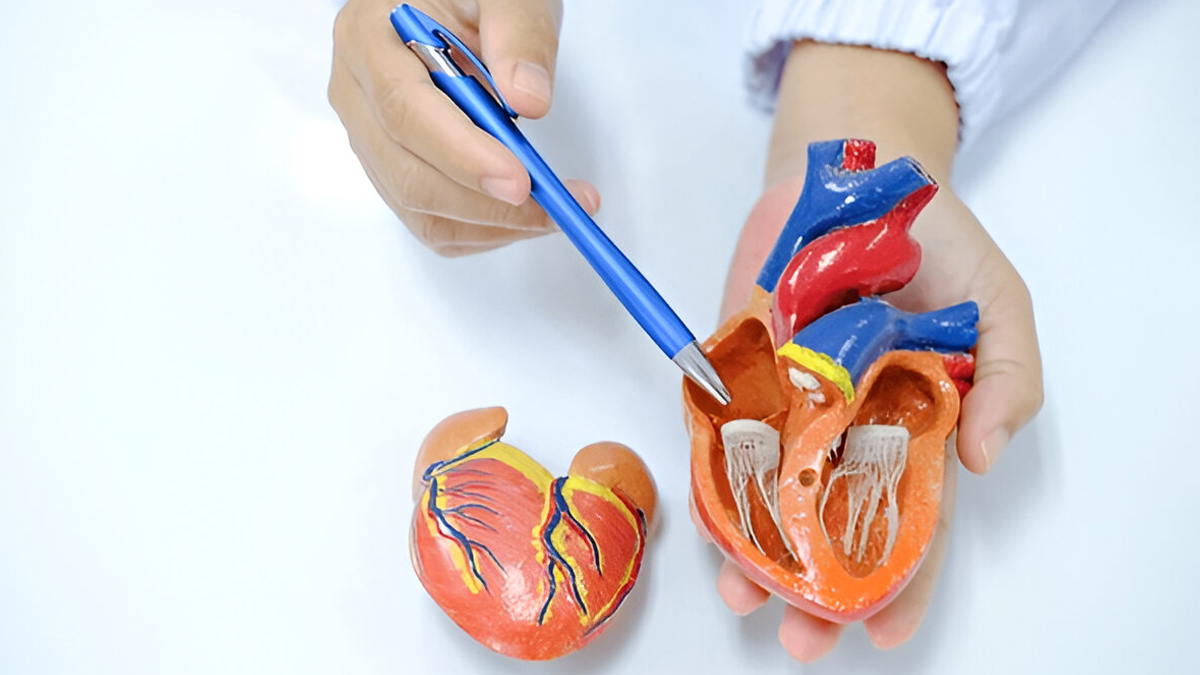
When it comes to matters of the heart, wouldn’t you want the best possible fix if something went wrong? For millions of people battling coronary artery disease, bypass surgery often becomes that life-saving fix. But not all bypass surgeries are created equal.
Table of Content:-
We spoke to Dr Umesh N, Consultant – Cardiovascular Surgeon, Gleneagles BGS Hospital, Bengaluru, who broke down a newer, more advanced surgical approach that’s gaining attention worldwide: Total Arterial Bypass Surgery. Unlike traditional methods that use veins from the leg, this technique relies solely on arteries, which are naturally built to handle the heart’s high-pressure demands. The result? Better long-term outcomes, fewer complications, and a longer-lasting fix.
But who is this surgery meant for, and how is it different from conventional bypass procedures? Let's break it down with the help of expert insight.
How Does Coronary Artery Disease Affect the Heart?

“The heart is a vital pump that circulates approximately 5 litres of blood every minute, from foetal development through adulthood and into old age. To function properly, it needs fuel in the form of oxygen, glucose, and other nutrients. These are delivered via two coronary arteries. When these arteries get blocked due to atherosclerotic coronary artery disease, the reduced blood supply can lead to chest pain, breathlessness, heart failure, or even a heart attack,” explained Dr Umesh.
Coronary artery disease continues to be one of the leading causes of death worldwide, including in India, affecting both men and women in urban and rural areas alike. According to a 2024 study, it is a major global health issue, responsible for 15.5% of deaths and increasingly prevalent in both urban and rural areas of India over the past 60 years. This rise has led to higher years of life lost and disability-adjusted life years due to CAD in the country.
Also Read: How To Manage Heart Health After Bypass Surgery
How Does Bypass Surgery Work?
When someone is diagnosed with coronary blockages, one of the main treatments is bypass surgery. Surgeons use spare blood vessels, called conduits, from the chest wall, forearm, or leg to reroute blood around the blockages, creating a new path for blood to reach the heart muscle.
How Are Conduits Chosen for Bypass Surgery?
When selecting conduits, two major questions are considered:
- Patency rate: Which conduits are likely to remain open longer?
- Patient survival: Do different types of conduits lead to better survival outcomes?
Which Are the Best Conduits for an Individual Patient?
Before answering these questions, here’s a look at the commonly used conduits for bypass surgery:
“The most commonly used conduits for coronary artery bypass grafting are the Left Internal Mammary Artery (LIMA), which runs along the inside of the chest wall near the heart, and the greater saphenous vein from the legs. A combination of arterial and venous grafts is often used to bypass the different coronary arteries,” said Dr Umesh.
The alternative conduits are the right internal mammary artery, RIMA for short, which is the mirror image of the LIMA; the Radial Artery (RA) from the forearm and rarely the Gastroepiploic Artery (GEA) from near the stomach.
What is Total Arterial Bypass Surgery?

Total arterial bypass surgery means bypassing all coronary blockages using only arterial conduits (LIMA, RIMA, RA, and occasionally GEA), instead of combining an artery with leg veins. The rationale is that the arterial conduits work better, both in the short and long term.
Total Arterial Bypass Surgery Vs Conventional Bypass Surgery
The arterial conduits have a better patency, meaning they remain open and do not get blocked as compared to the veins. “For example, the LIMA remains open in over 90% of patients even 15 years after surgery. In contrast, leg vein grafts have a greater than 50% chance of blockage within 10 years.
This is because arteries are more resistant to new cholesterol buildup and naturally produce protective substances, such as nitric oxide, which prevent narrowing and blockage. That’s what contributes to better long-term survival,” shared Dr Umesh.
Is Total Arterial Bypass Surgery for Everyone?
Total arterial bypass surgery should be attempted for every patient. However, there are certain factors which preclude this procedure. "An ideal candidate is a young patient with very tight (>90%) blocks, reasonably sized coronary arteries, and well-controlled diabetes, among other factors. The decision: what type of arteries to use, how many, and in what combination, must be tailored to each patient’s unique condition," highlighted Dr Umesh.
Also Read: Angioplasty Or Bypass Surgery: When To Choose Which One, Explained By Expert
Benefits of Total Arterial Bypass Surgery

Improved Long-term Patency
Arterial conduits are more durable than veins, reducing the risk of future blockages and the need for repeat surgeries.
Better Survival Rates
There is ample evidence that patients undergoing total arterial bypass surgery have better long-term survival and fewer major complications.
Lower Risk of Stroke
Using arterial grafts enables surgeons to use 'no-touch' techniques on the aorta, reducing the risk of stroke by avoiding manipulation of major blood vessels.
Challenges and Limitations
- Longer Operative Time: Harvesting multiple arterial grafts and constructing complex configurations requires more time and surgical expertise.
- Higher Technical Demand: Precise operative technique is essential for long-term success.
- Increased Risk of Wound Complications: Especially in poorly controlled diabetic or obese patients or those with osteoporosis, when bilateral IMA grafts are used.
Bottomline
Dr Umesh concluded, “Total arterial bypass surgery represents a significant step ahead in the treatment of complex coronary artery disease, with superior outcomes compared to conventional approaches, in spite of its technical challenges. Total arterial bypass surgery is poised to play an increasingly central role in coronary revascularisation.”
[Disclaimer: This article contains information provided by an expert and is for informational purposes only. Hence, we advise you to consult your professional if you are dealing with any health issue to avoid complications.]
Also watch this video
How we keep this article up to date:
We work with experts and keep a close eye on the latest in health and wellness. Whenever there is a new research or helpful information, we update our articles with accurate and useful advice.
Current Version